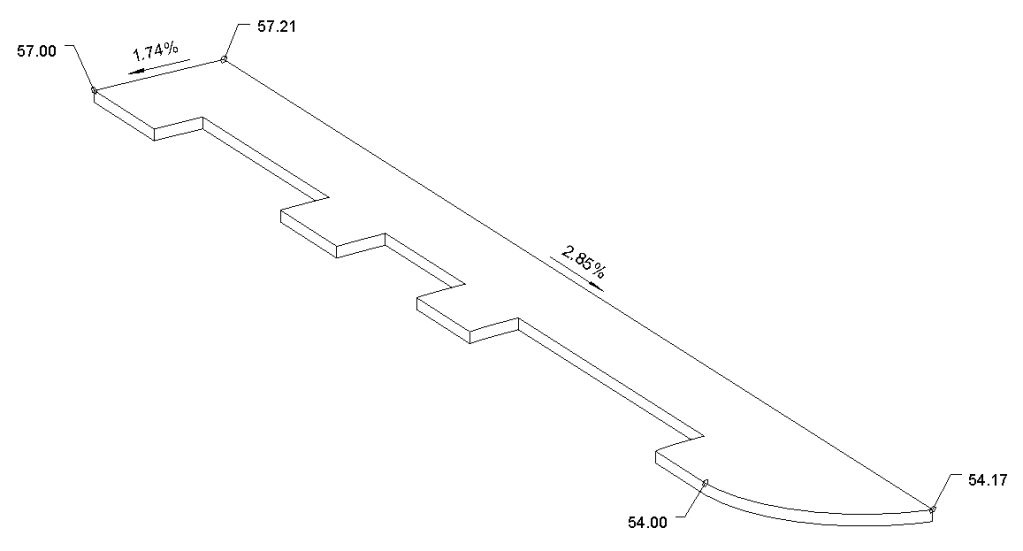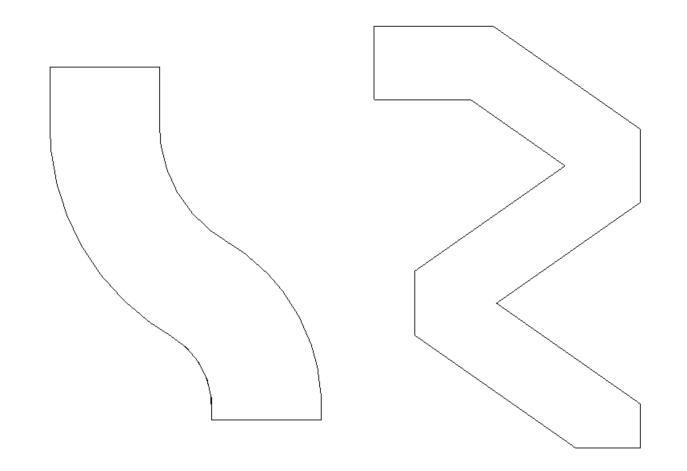When working with shaped-edited Floors, it can be a bit cumbersome to work with complex shapes, since Revit will create a point at each vertex of the outline.
So for example, if you are making a sidewalk shaped like this, Revit forces a point at each vertex:

One way around this is to create a larger floor “framework” and then to cut out the shape you want using voids.
To start off, I usually like to create the complex floor first as a flat floor. This is useful to simply visualize the shapes and also to serve as a guide when creating the voids.
So here is the shape I’m working with.

This is a common sidewalk shape, once you account for the various planters that are usually along the curb.

So the next step is to determine the shape for the larger floor. This is where grading and slope should be considered. For sidewalks, usually the simpler the better, but for other situations it might vary. Essentially, think about where you want to have points and try to make a shape that connects those points with as few segments as possible. For this sidewalk, it looks like this:

And then create the void. This can be done with the Vertical Opening (on the Architecture tab).


And the final result is a complex floor that is graded in 3d, yet only controlled by 4 points.

There are several downsides that I have found when using this method:
- It is more complex to manage. Basically, instead of a single floor boundary, you need to manage the two boundaries of the larger floor and the void(s).
- You can sometimes run into cutting errors, especially when working with curved shapes. A few tips to reduce those errors:
- Extend voids out past the edge of the framework boundary.
- Avoid using curved edges for your larger framework unless unavoidable. Using curves can reduce vertices, but they are tricky to work with and can also give you some funny results.
This process can also be used to create more complex shapes, such as these:

Though how exactly you decide to frame and cut them could vary depending on your grading and modeling needs.

Good tip. Thanks!